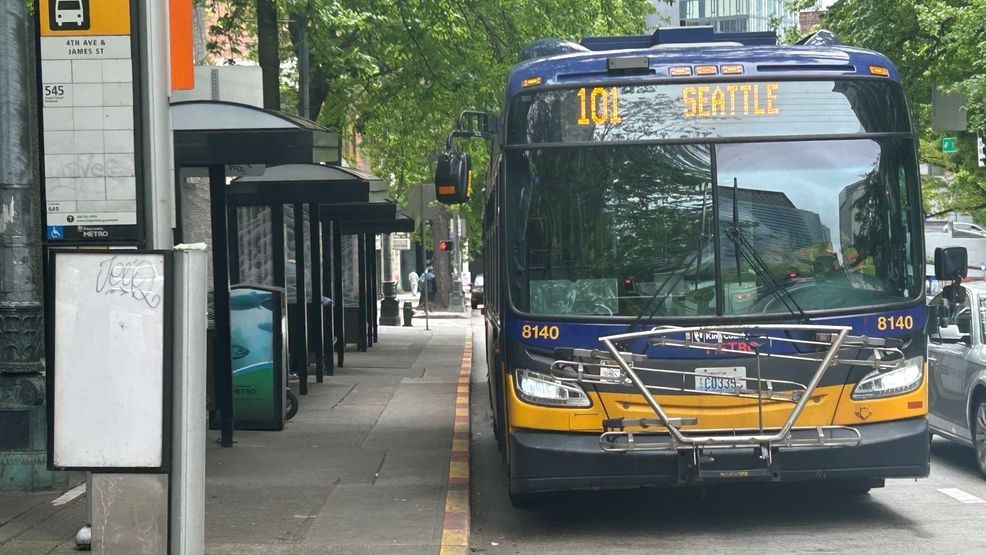SEATTLE — Drug use on or near Metro buses is on the decline as the transit agency adds new layers of security measures and enforces clear expectations for people who use the system.
The latest statistics show that reports of drug-related incidents dropped by more than a third last year compared to 2023, and these positive results are continuing into the first part of this year.
PREVIOUSLY | King County Metro sees rise in ridership and drop in safety incidents, but concerns linger
In 2024, there were 1,022 drug-related incidents reported, according to King County Metro, which represented about one incident per 80,000 boardings. That is down 35% compared to 2023, when 1,578 drug-related incidents were reported on or near Metro, or about one incident per 49,000 boardings.
The trend has continued so far this year. In the first quarter of 2025, Metro has received 254 reports of drug-related incidents. That is down 12% compared to the previous year and represents a 41% drop from the reports compiled in 2023.
Some riders have noticed the difference.
“They’ve been clean every time I’ve been on. I ride during the day,” said Matt Samek, who says he regularly commutes by bus. “I feel safe.”
Other bus passengers said encounters with drug addicts still seem to be prominent.
“I have had a few instances where I’d actually smell fentanyl because it’s a very distinct smell. I’ve seen people doing it in the back,” said Kira Berman, who rides Metro daily. “It puts your children at risk. It puts everyone at risk.”
SEE ALSO | Seattle bus driver says fentanyl smoke makes him sick; health dept. says it’s no real risk
King County Metro spokesperson Sean Hawks said the transit agency has benefited from a wider effort by multiple agencies to disrupt the drug trade, especially in downtown Seattle. Metro has also made significant changes on its own.
“We’ve really increased the number of Metro Transit Police, transit security officers, and having behavioral health specialists in certain places,” Hawks said. “Those are programs we’re continuing to staff up, scale up, and again we’re hearing a really positive response.”
Another deterrent could be easier reporting procedures when drug use occurs, as well as signs posted inside buses that list a code of conduct that passengers are expected to follow.
“The operators are more attentive to the riders’ behaviors,” said Rudy Solomon, a Metro passenger.
Metro officials said they recognize the safety concerns drug use creates for other passengers, both from exposure to smoke as well as the potentially unpredictable behavior of users. The efforts the agency is making have not eliminated the problem but they do seem to be making a difference.
“These incidents have always been rare but we’re going to say one incident is always too many,” Hawks said.
Berman said even though her bus rides can still have sketchy moments, she does see improvements.
“A lot more security, people checking tickets, just making sure everything is going OK,” Berman said. “There’s definitely changes that can always be made to better things but I think they are doing good. I think they are doing better.”
People who want to provide feedback to King County Metro can go to kingcounty.gov/metro/ride or they can call 206-553-3000.


